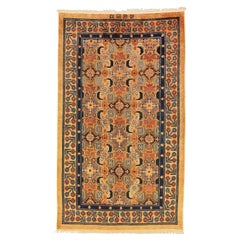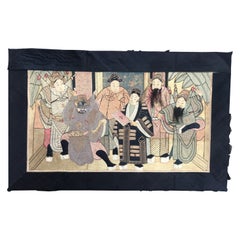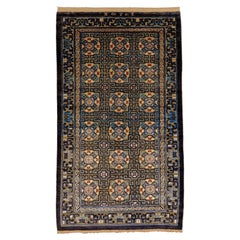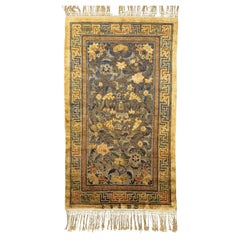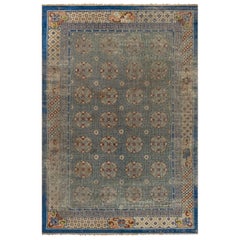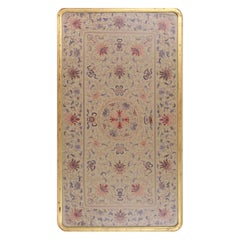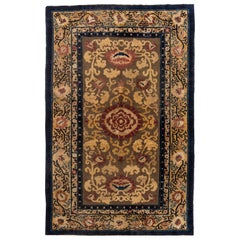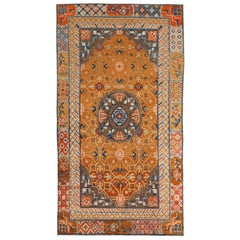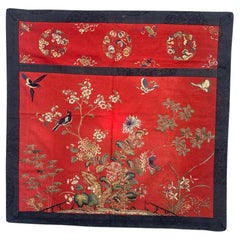Chinese Antiques Metal
Antique 19th Century Chinese Other Chinese and East Asian Rugs
Cotton
Early 20th Century Chinese Ming Chinese and East Asian Rugs
Metal
Antique Late 19th Century Chinese Other Chinese and East Asian Rugs
Metal
Antique 19th Century Chinese Chinese and East Asian Rugs
Wool
Antique Late 19th Century Chinese Chinese and East Asian Rugs
Wool
Antique Late 19th Century Chinese Other Chinese and East Asian Rugs
Silk
Antique Late 19th Century Chinese Chinese and East Asian Rugs
Metal
Antique Mid-19th Century Chinese Qing Chinese and East Asian Rugs
Metal
Antique Late 19th Century Chinese Chinoiserie Tapestries
Metal
Antique 19th Century Chinese Chinoiserie Tapestries
Metal
Antique 19th Century Chinese Chinoiserie Textiles
Silk
Antique 19th Century Chinese Chinoiserie Textiles
Silk
Antique 18th Century Chinese Candelabras
Quartz, Metal, Enamel
Antique Early 1900s Chinese Chinese Export Jars
Metal
Antique 19th Century Japanese Edo Ceramics
Metal, Bronze
Antique 1870s Chinese Drop Earrings
Jade, Gilt Metal
Antique Late 19th Century Chinese Qing Furniture
Metal
Antique Early 1900s Chinese Hoop Earrings
Gilt Metal
Antique 19th Century Chinese Qing Models and Miniatures
Metal
Antique Late 19th Century Chinese Chinoiserie Textiles
Metal
Vintage 1920s Chinese Export Decorative Boxes
Metal
Early 20th Century Chinese Table Lamps
Wood
Early 20th Century Chinese Table Lamps
Wood
Early 20th Century Chinese Scientific Instruments
Metal
Early 20th Century Chinese Chinese Export Metalwork
Metal
Early 20th Century Chinese Rustic Trunks and Luggage
Metal
Antique 19th Century Chinese Qing Antiquities
Wood
Early 20th Century Chinese Chinese Export Animal Sculptures
Metal
Antique 19th Century Chinese Rustic Decorative Boxes
Metal
Early 20th Century Chinese Art Deco Cigar Boxes and Humidors
Copper
Antique Late 19th Century Vanity Items
Brass, Silver
Antique 19th Century Japanese Edo Arms, Armor and Weapons
Bronze
Early 20th Century Chinese Metalwork
Metal
Early 20th Century Chinese Metalwork
Metal
Early 20th Century Chinoiserie Decorative Bowls
Metal, Enamel
Early 20th Century Chinese Chinese Export Vases
Metal
Early 20th Century Chinese Metalwork
Metal, Enamel
Antique 19th Century Chinese Qing Metalwork
Metal, Enamel
20th Century Chinese Ceramics
Metal, Enamel
Early 20th Century Chinese Table Lamps
Wood
Early 20th Century Chinese Chinese Export Decorative Bowls
Metal, Copper
Early 20th Century Chinese Chinese Export Decorative Bowls
Metal, Copper
Early 20th Century Chinese Chinese Export Vases
Metal, Copper
Antique Early 19th Century Chinese Chinese Export More Asian Art, Object...
Metal
20th Century Chinese Chinese Export Figurative Sculptures
Metal
Antique 19th Century Chinese Rustic Decorative Baskets
Metal
Antique Early 1900s Chinese Textiles
Metal
Vintage 1950s Chinese Chinese Export Coffee and Cocktail Tables
Metal
20th Century Chinese Chinese Export Figurative Sculptures
Metal
20th Century Chinese Chinese Export Figurative Sculptures
Metal
20th Century Chinese Pottery
Metal, Enamel
20th Century Chinese Ming Urns
Metal
Antique 19th Century Chinese Tobacco Accessories
Metal
Early 20th Century Chinese Chinese Export Decorative Bowls
Metal
Early 20th Century Chinese Chinese Export Animal Sculptures
Metal, Enamel
Early 20th Century Chinese Chinoiserie Table Lamps
Metal
Early 20th Century Chinese Metalwork
Metal
20th Century Chinese Vases
Metal, Enamel
- 1
Chinese Antiques Metal For Sale on 1stDibs
How Much is a Chinese Antiques Metal?
 PAGODA REDOctober 7, 2020
PAGODA REDOctober 7, 2020To determine the age of a Chinese furniture piece, look carefully at the joinery and finish. Natural expansion and contraction of the wood over time will cause a joint to protrude or retract, distorting a once-seamless fit. Antique lacquer finishes become crackled and worn over time. Areas of exposed wood, such as the underside of a table, the footrest of a chair, or the back of a cabinet should appear raw and dry compared to the finished surface. With use, the legs of tables and chairs become weathered near the bottom from precipitation and use.
 Lotus GallerySeptember 23, 2020
Lotus GallerySeptember 23, 2020The best way to know is to take it to an expert, such as an appraiser, reputable dealer or auction house, or museum
- 1stDibs ExpertNovember 4, 2024To identify antique Chinese furniture, look carefully at its details. Chinese craftsmen often built furniture using mortise and tenon joinery, eliminating the need for nails and screws. If you see this type of hardware, your piece is likely not at least 100 years old, especially if the hardware still looks new and shiny. Since antique furniture was handmade, you will normally see slight imperfections, such as tool marks or slight variations in carvings. Pieces that appear completely uniform and pristine are less often genuine antiques.
When present, maker's marks can also be helpful. Research the marks to learn more about when the maker was active and producing pieces like yours. Alternatively, you can have a certified appraiser or experienced antique dealer evaluate your furniture for you.
Shop an assortment of antique Chinese furniture.
